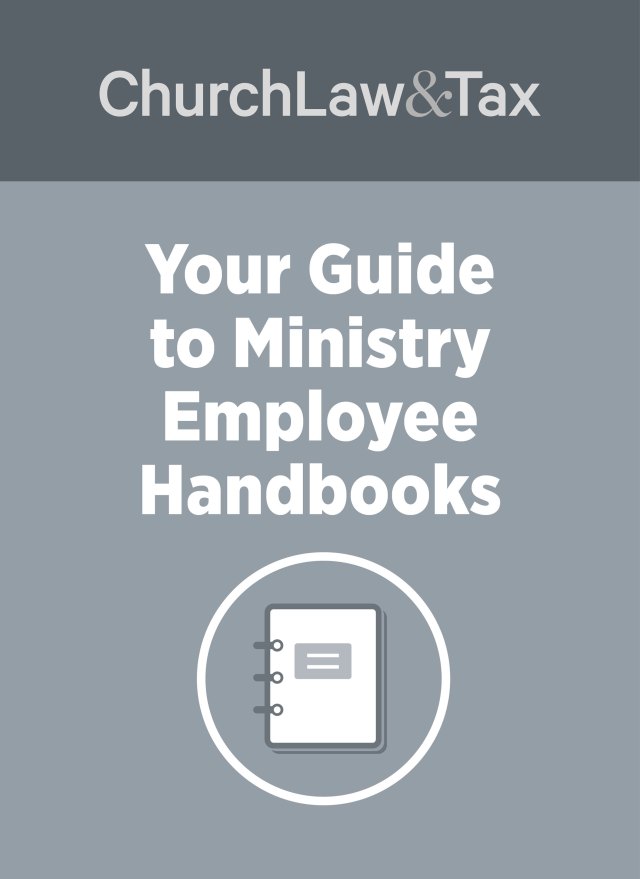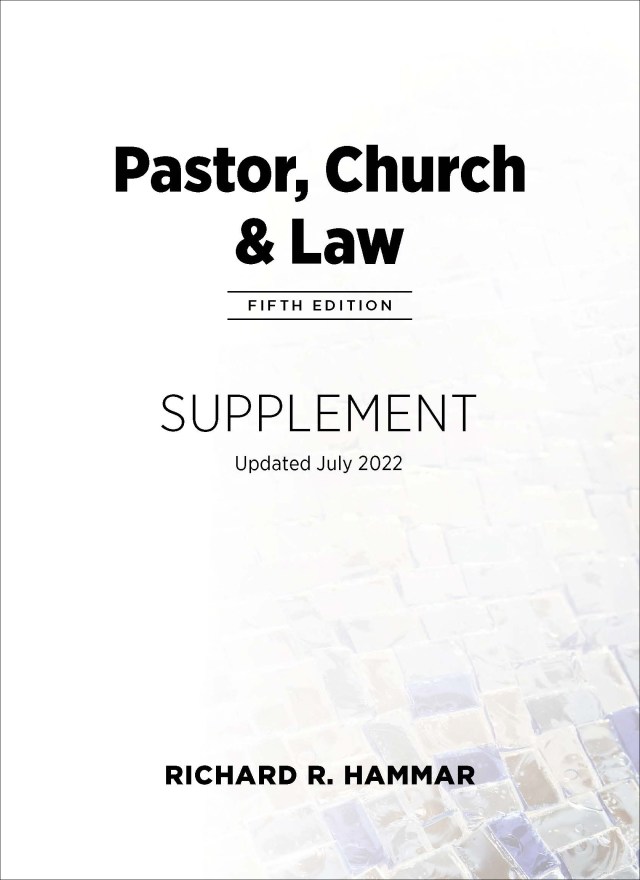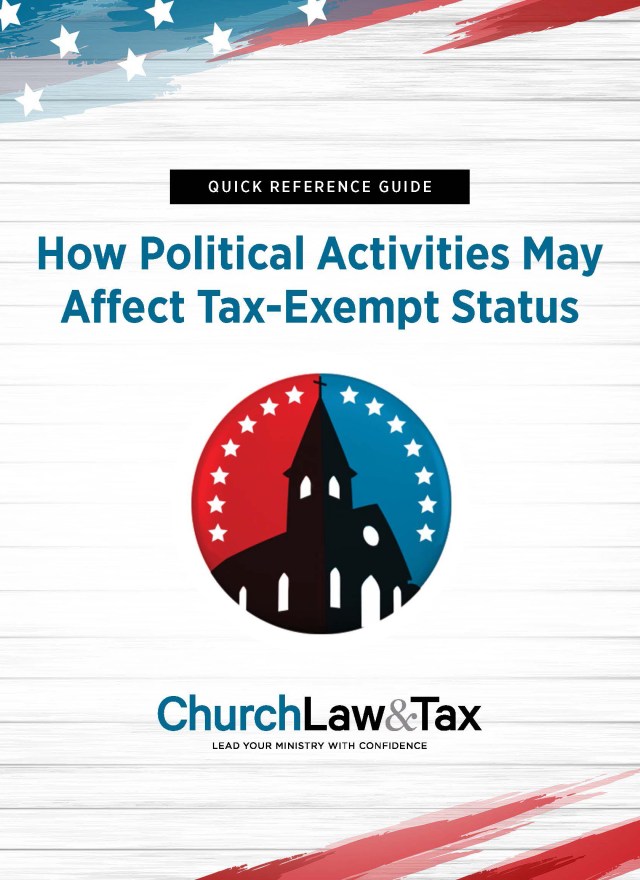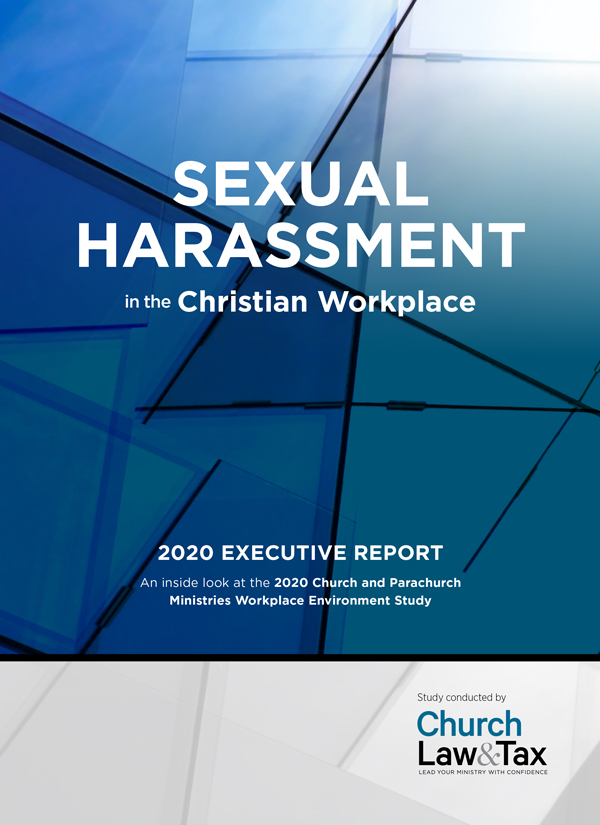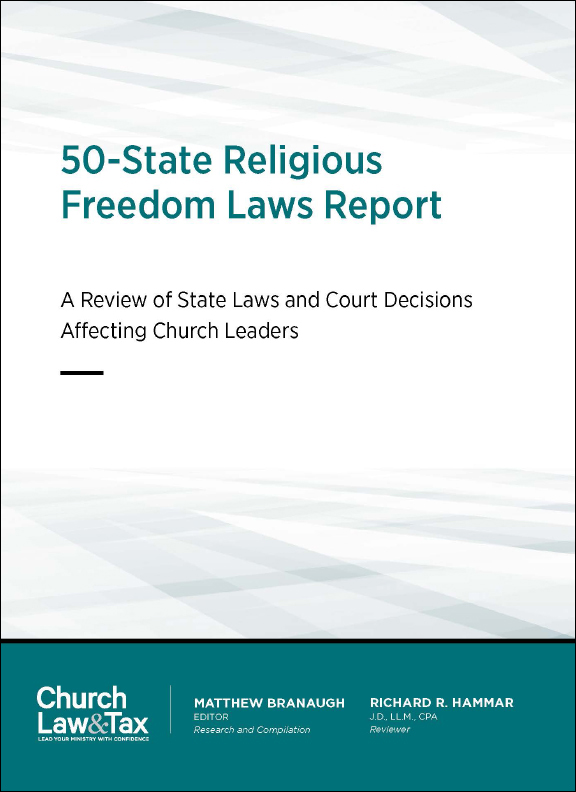Key Point 8-12.5. Sexual harassment is a form of sex discrimination prohibited by Title VII of the Civil Rights Act of 1964. It consists of both “quid pro quo” harassment and “hostile environment” harassment. Religious organizations that are subject to Title VII are covered by this prohibition. An employer is automatically liable for supervisory employees’ acts of harassment, but a defense is available to claims of hostile environment harassment if they have adopted a written harassment policy and an alleged victim fails to pursue remedies available under the policy. In some cases, an employer may be liable for acts of sexual harassment committed by nonsupervisory employees, and even nonemployees.
Key Point 8-10.1. The civil courts have consistently ruled that the First Amendment prevents them from applying employment laws to the relationship between a church and a minister.
A federal court in Ohio ruled that a female church employee’s sexual harassment claim had to be dismissed for lack of proof. However, the church was unsuccessful in its attempt to invoke the “ministerial exception”—a key judicial doctrine affording churches great latitude with hiring and firing ministers—prior to the dismissal.
Background: Employee alleged gender and racial harassment
A church hired an African-American female (the “plaintiff”) as its Minister for Youth Advocacy and Leadership Formation. Over the next few years, the plaintiff alleged that she experienced several incidents of gender and racial harassment:
First, a constituent told her: “I thought you only got the job because you are young and black.”
Second, a supervisor called her a “sassy, young, African-American woman.”
Third, another employee refused to communicate with the plaintiff and spread false information about her work.
Fourth, when the plaintiff complained about biases and stereotypes among the church’s managerial staff, her supervisor advised her to “work harder to get along with persons holding racist, sexist and discriminatory views because of the money they give to [the church].”
Finally, she alleged that her supervisor engaged in “rude, unprofessional, and insensitive conduct” during a meeting regarding her advocacy” at a denominational meeting. When the plaintiff stated she wanted to report her concerns to the church’s human resources department, her supervisor allegedly responded: “Go right ahead. You take everything else to HR.”
She reported her concerns to the HR director but alleged that nothing was done.
A lawsuit followed the employee’s termination
The church terminated the plaintiff’s employment, and she responded by suing the church in federal court claiming that it was liable on the basis of “hostile environment” sexual harassment.
The church asked the court to dismiss the lawsuit on the ground that it was barred by the ministerial exception. The ministerial exception generally bars the civil courts from resolving discrimination claims brought by church employees. But the plaintiff insisted that the ministerial exception did not bar claims of “hostile environment” sexual harassment by church employees.
The court observed:
[T]he court concludes that a minister’s hostile work environment claim can survive the ministerial exception—at least when the claim does not entail excessive entanglement with religious matters. And after examining [the plaintiff’s complaint] the court concludes that it does not implicate ‘any matters of church doctrine or practice.’ . . . [The plaintiff’s] hostile workplace claim involves allegations of racial and gender harassment that are wholly unrelated to [the church’s] religious teachings. [The church does] not claim that such insults are part of [church] policies or religious beliefs. . . . Consequently, because ruling on [the plaintiff’s] hostile workplace claim would not require the court to delve into religious doctrine or other ecclesiastical domains, the court finds that the ministerial exception does not apply to [her lawsuit].
However, the court concluded that while the plaintiff’s sexual harassment claim was not barred by the ministerial exception, “[t]o maintain a hostile work environment claim under Title VII, the victimized employee must allege that ‘the workplace is permeated with discriminatory intimidation, ridicule, and insult that is sufficiently severe or pervasive to alter the conditions of the victim’s employment and create an abusive working environment’” (quoting the US Supreme Court’s decision in Harris v. Forklift Systems, 510 U.S. 17 (1993)).
The court continued:
Courts look to the totality of the circumstances to assess such claims. While there are no hard and fast rules as to how much harassment is enough harassment to qualify as severe or pervasive . . . the Supreme Court has provided a non-exhaustive list of factors to consider when deciding whether a hostile work environment exists including: “the frequency of the discriminatory conduct; its severity; whether it is physically threatening or humiliating, or a mere offensive utterance; and whether it unreasonably interferes with an employee’s work performance” (quoting Harris).
The court concluded:
To support her claim, the plaintiff “recounts several incidents that allegedly occurred during her employment [summarized above]. . . . Taking these allegations as true and considering them in the light most favorable to [her], the court concludes that the Complaint fails to state a plausible claim for hostile work environment. While [the plaintiff] describes interactions that are unprofessional and unpleasant, none of the alleged conduct was physically threatening or humiliating. At most, these sporadic comments constituted “offensive utterances,” which “do not rise to the level required by the Supreme Court’s definition of a hostile work environment. Mere utterance of an . . . epithet which engenders offensive feelings in an employee . . . does not sufficiently affect the conditions of employment to implicate Title VII.”
That these incidents occurred sporadically over five years further undermines the plaintiff’s claim. . . . Because [she] does not allege severe or pervasive conduct, her allegations do not support a plausible hostile work environment claim. Accordingly, the court grants the church’s motion to dismiss [the sexual harassment claim].
What this means for churches
Sexual harassment is a form of “sex discrimination” prohibited by Title VII of the Civil Rights Act of 1964. Equal Employment Opportunity Commission (EEOC) regulations define sexual harassment as follows:
(a) Harassment on the basis of sex is a violation of Sec. 703 of Title VII. Unwelcome sexual advances, requests for sexual favors, and other verbal or physical conduct of a sexual nature constitute sexual harassment when (1) submission to such conduct is made either explicitly or implicitly a term or condition of an individual’s employment, (2) submission to or rejection of such conduct by an individual is used as the basis for employment decisions affecting such individual, or (3) such conduct has the purpose or effect of unreasonably interfering with an individual’s work performance or creating an intimidating, hostile, or offensive working environment.
This definition confirms the conclusion reached by numerous state and federal courts that sexual harassment includes at least two separate types of conduct:
(1) “quid pro quo” harassment, which refers to conditioning employment opportunities on submission to a sexual or social relationship, and
(2) “hostile environment” harassment, which refers to the creation of an intimidating, hostile, or offensive working environment through unwelcome verbal or physical conduct of a sexual nature.
Note. The above information was taken from section 8-12.5 of Richard Hammar’s Pastor, Church & Law, Fifth Edition. Turn to this section for additional information on the application of sexual harassment laws to churches. It’s also available in the Legal Library.
The court in this case concluded that the ministerial exception does not prevent the civil courts from resolving ministers’ “hostile environment” sexual harassment claims against a church employer so long as the claim “does not entail excessive entanglement with religious matters.” The court was able to resolve the plaintiff’s sexual harassment claim because “it does not implicate any matters of church doctrine or practice” and was “wholly unrelated to [the church’s] religious teachings.”
Perhaps the most important aspect of the court’s opinion was its conclusion that the plaintiff’s sexual harassment claim had to be dismissed because her claims of harassment were not sufficiently serious.
As the Supreme Court has observed, “to maintain a hostile work environment claim under Title VII, the victimized employee must allege that the workplace is permeated with discriminatory intimidation, ridicule, and insult that is sufficiently severe or pervasive to alter the conditions of the victim’s employment and create an abusive working environment.”
The Supreme Court has provided an inexhaustive list of factors to consider when deciding whether a hostile work environment exists, including:
- the frequency of the discriminatory conduct;
- its severity;
- whether it is physically threatening or humiliating, or a mere offensive utterance; and
- whether it unreasonably interferes with an employee’s work performance.
Middleton v. United Church of Christ Bd. 483 F. Supp. 3d 489 (N.D. Ohio, Eastern Division 2020).
